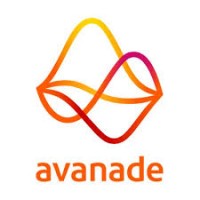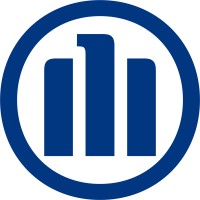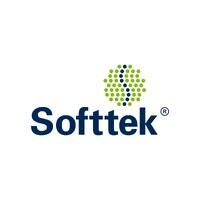Company Cyber Security Posture
NANA
NA Company Details
NA
NA
NA
NA
NA
NA
Scan still pending
NA
NA
Between 200 and 800
This score is AI-generated and less favored by cyber insurers, who prefer the TPRM score.
 NA Global Score
NA Global Score.png)

Company Scoring based on AI Models
| Model Name | Date | Description | Current Score Difference | Score |
|---|---|---|---|---|
| AVERAGE-Industry | 03-12-2025 | This score represents the average cybersecurity rating of companies already scanned within the same industry. It provides a benchmark to compare an individual company's security posture against its industry peers. | N/A | Between 200 and 800 |
Company Cyber Security News & History
| Entity | Type | Severity | Impact | Seen | Url ID | Details | View |
|---|
Company Subsidiaries

NA
Access Data Using Our API

Get company history
.png)
NA Cyber Security News
Samsung SDS Unveils Five Key Cybersecurity Threats in 2025
Samsung SDS analyzed cybersecurity issues that occurred in and outside of Korea last year and announced five key cybersecurity threats that ...
Samsung SDS reveals top 5 cybersecurity threats driven by generative AI in 2025 - CHOSUNBIZ
Samsung SDS analyzed cybersecurity issues that occurred domestically and abroad last year and announced the top five cybersecurity threats to watch out for ...
Major Korean firms spend annual average of $2.1 million on cybersecurity
Korea's major companies spent an average of 2.9 billion won ($2.1 million) per year on information protection, industry data showed Monday.
Samsung SDS Announces “AI-driven Security Threat” as Top Issue of Cybersecurity in 2024
Samsung SDS analyzed cybersecurity issues that occurred throughout the world in the previous year, and selected five major cybersecurity ...
Samsung SDS calls attacks on cloud biggest threat to cyber security
Cloud protection is the top cyber security concern for companies this year, a study says.Samsung SDS Co. on Thursday said this in its ...
Samsung SDS Selects “Cloud” as Top Issue in Corporate Cybersecurity of 2023
Samsung SDS selected “cloud security” as top issue of concern in corporate cybersecurity of this year.
Samsung SDS acquires Korea’s No. 1 procurement SCM company
Samsung SDS Co., the information technology service unit of South Korea's Samsung Group, has acquired a 33.39% stake in Emro Inc., Korea's top ...
Samsung SDS to Collaborate with NCCoE in the Migration to Post-Quantum Cryptography Project
Samsung SDS announced that it will take part in the Migration to Post-Quantum Cryptography (PQC) project hosted by the National ...
SDSA's Adoption of Cloudability for Superior Cost Management | Samsung SDS
This tool provides a holistic view of cost and usage for our cloud environment and assists IT, finance, and business teams to optimize costs to ...

NA Similar Companies

Avanade
Avanade is the world’s leading expert on Microsoft. Trusted by over 5,000 clients worldwide, we deliver AI-driven solutions that unlock the full potential of people and technology, optimize operations, foster innovation and drive growth. As Microsoft’s Global SI Partner we combine global scale with

Accenture in the Philippines
Accenture is a leading global professional services company, providing a broad range of services and solutions in strategy, consulting, digital, technology and operations. Combining unmatched experience and specialized skills across more than 40 industries and all business functions—underpinned by t

Allianz Technology
With its headquarters in Munich, Germany, Allianz Technology is Allianz's global IT service provider and delivers IT solutions that drive the group's digitalization. With more than 13,000 employees in more than 20 countries around the world, Allianz Technology is tasked to run, optimize, transform,

Softtek
Founded in 1982 by a small group of entrepreneurs, Softtek started out in Mexico providing local IT services, and today is a global leader in next-generation digital solutions. The first company to introduce the Nearshore model, Softtek helps Global 2000 organizations build their digital capabilitie

Sutherland
Artificial Intelligence. Automation. Cloud engineering. Advanced analytics. For business leaders, these are key factors of success. For us, they’re our core expertise. At Sutherland, we are a leading global business and digital transformation partner. Our services span a diversified range of categ

ThunderSoft
ThunderSoft is a provider of operating system technologies, superior products and solutions, experts in mobile, IoT, automotive, and enterprise. Founded in 2008, through ThunderSoft’s expertise in edge intelligence and operating systems including Android, Linux, Windows and others, a profound mid

Frequently Asked Questions
Explore insights on cybersecurity incidents, risk posture, and Rankiteo's assessments.
NA CyberSecurity History Information
How many cyber incidents has NA faced?
Total Incidents: According to Rankiteo, NA has faced 0 incidents in the past.
What types of cybersecurity incidents have occurred at NA?
Incident Types: The types of cybersecurity incidents that have occurred include .
Additional Questions
What Do We Measure?
















Every week, Rankiteo analyzes billions of signals to give organizations a sharper, faster view of emerging risks. With deeper, more actionable intelligence at their fingertips, security teams can outpace threat actors, respond instantly to Zero-Day attacks, and dramatically shrink their risk exposure window.
These are some of the factors we use to calculate the overall score:
Identify exposed access points, detect misconfigured SSL certificates, and uncover vulnerabilities across the network infrastructure.
Gain visibility into the software components used within an organization to detect vulnerabilities, manage risk, and ensure supply chain security.
Monitor and manage all IT assets and their configurations to ensure accurate, real-time visibility across the company's technology environment.
Leverage real-time insights on active threats, malware campaigns, and emerging vulnerabilities to proactively defend against evolving cyberattacks.




